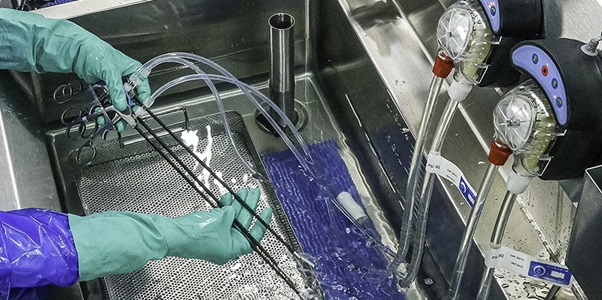
Ultrasonic cleaning is revolutionary technology that has the ability to clean pretty much anything that comes to mind. This includes vital medical equipment that must be thoroughly cleaned and sterilised before use!
But to ensure you get the perfect ultrasonic cleaning machine, you first have to decide your objectives when using one.
With this in mind, here are five important considerations for choosing the perfect equipment for your needs:
- The size of the largest parts to be cleaned
What is the size of the largest part to be cleaned in your machine? You should take a full measurement of this part or piece of equipment to ensure it will fit in your potential device. The last thing you want is device that cannot accommodate your needs, so this is the first and most essential consideration to make!
- Why do you need the equipment?
Naturally, this imperative equipment is enlisted in a wide range of fields, especially that of the medical industry, that requires the most reliable technology available to ensure a thorough clean. So, consider your goals with the technology, including aspects like what you wish to clean, whether you’re trying to reduce sterilisation costs and how often you will need to use it.
- Using the right components
This is pivotal as there are parts of the machine that cannot come into contact with the parts being cleaned. For example, the parts cannot come into contact with the transducers found in the tank. This is where you must use parts baskets and specifically-chosen baskets for each application.
Any baskets or pieces of equipment touching the transducer packs will cause the pack surface to scratch. Although the packs are made using tough stainless steel, once scratching or etching happens there is the risk of erosion and this can ruin the transducer pack’s integrity. It is important to repair such damage – the part must be replaced.
What’s more, these parts produce heat energy as they operate. This heat will rise during application due to the cavitation activity’s friction operating within the cleaning vessel – such a rise in temperature is unavoidable and heaters have to be used to raise the solutions to the proper commencement temperature.
- Wave sweep & generator adjustability
Wave sweep is incorporated in all of this machine’s applications, as through deploying various frequencies using different wavelengths, this function essentially alleviates inactive areas in the tank. This produces a more efficient application to all parts and especially those that require intrinsic and highly detailed work.
- Power & frequency
Typical ultrasonic cleaning machines operate between 28 and 120 KHz. Lower frequencies produce higher cavitation bubbles and a more abrasive solution, and these frequencies are recommended for rougher applications like removing compounds from metal surfaces. When it comes to cleaning soft metals, you may require a higher frequency.
The most typical frequencies are located between 38 to 40 KHz as they are ideal for the large majority of industrial and commercial jobs. They should generate enough power to deal with your toughest jobs.
Ultrasonic generator controls should allow you to turn down the power whenever you require more delicate work to be completed. As you can turn down the power you shouldn’t have to buy a machine with minimal power capability. You may even require more energy for cleaning delicate items in higher numbers.
These are the essential considerations to make when purchasing this essential technology. By following the above, and especially considering your chosen application, you should be able to find the perfect technology for yours and your business’s needs!





